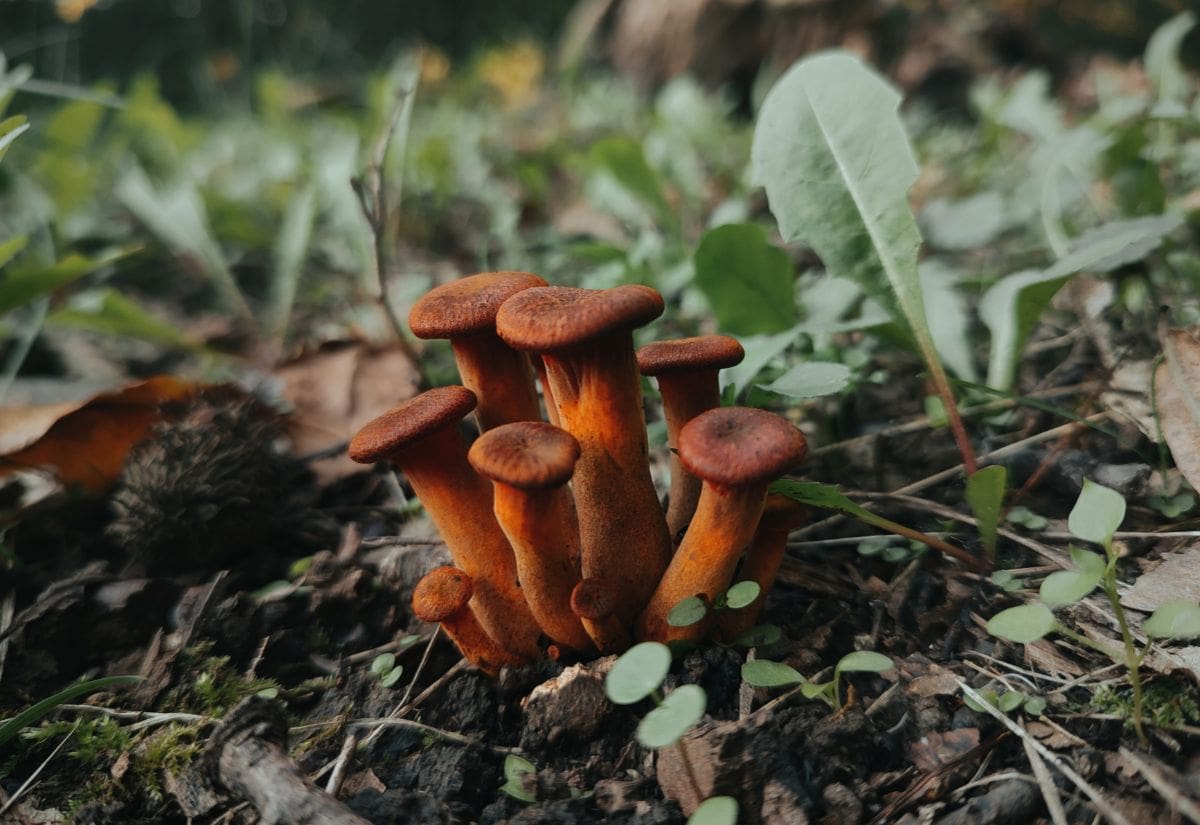
If mushrooms are growing in your raised bed, or popping up all over your garden, then you might be worrying something is wrong. But don’t worry! In most cases, mushrooms are surprisingly good for our garden and they will provide countless benefits to your plants.
You may have questions like, “where do mushrooms come from? Why are mushrooms sprouting in my yard? Are they harmful or helpful? How can I get rid of them, and should I?”
Millions upon millions of beneficial fungi grow under the soil, and the mushrooms are the parts that pop up above the ground. While it’s a strict no-no to eat them, you have the option to either let them be, and they’ll soon retreat back into the soil, or you can uproot the mushrooms or simply blend them back into the soil.
If their appearance displeases you or if you harbor concerns about certain toxic varieties, then mushrooms could indeed pose a problem.
Yes, some mushrooms are toxic to humans and can be harmful to dogs and cats, hence it’s advisable to remove them from garden beds with edible crops to prevent contamination.
Keeping reading to learn more about the fascinating world of mushrooms and how they will make your garden a better, healthier place and what you can do and what not to do about them in the long run.
Where Do Mushrooms Really Come From?
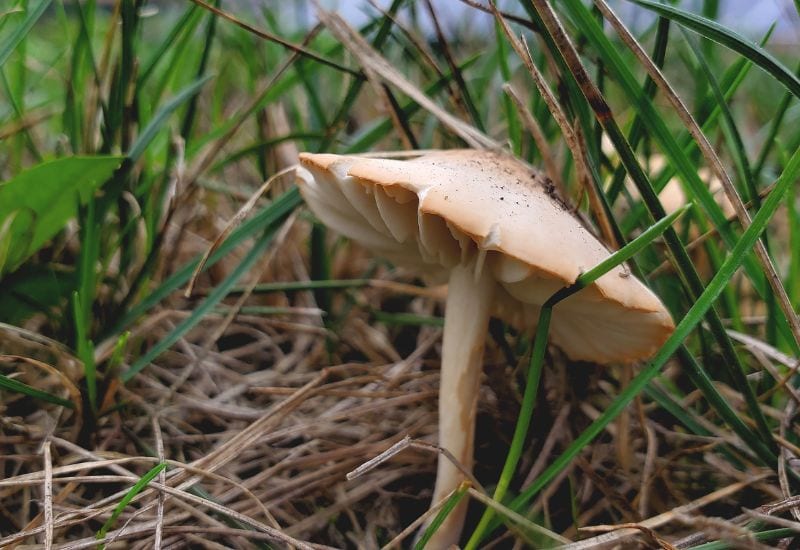
When we think of fungi in the garden, we often think of something bad that is making our plants mold or rot. Underneath our feet, however, good fungi are growing to create healthy soil.
Countless microscopic filaments (hyphae) join together to create masses of fungal networks called mycelium. These fungi can be invisible to the eye, or they can develop into threads of root-like structures in the soil, and a single spoonful of soil can contain miles and miles of these fungal threads.
When the conditions are right, the mycelium form together above ground to create mushrooms, which are actually the reproductive structures (sometimes called fruiting structures) of a fungus. Mushrooms produce and release spores, which will in turn create new hyphae and form a new fungus.
There are roughly 11,000 named mushroom species in North America alone, and scientists agree that this is but a small part of the actual different fungi out there.
Why Are There So Many Mushrooms Growing in My Yard and Garden?
If you have mushrooms growing in your garden soil, it is because the conditions are just right for these fungi to grow and spread. While each mushroom is unique and thrives in different environments, most mushrooms grow best with the following:
In most cases, the conditions in which mushrooms thrive are good for your garden and mushrooms are a sign of healthy soil with good moisture retention and lots of organic matter. So, if mushrooms are appearing then you probably have a good environment for growing plants.
Are Mushrooms In Your Garden Soil A Good Or Bad Sign?
Mushrooms are also extremely good for your soil and your plants. Mushrooms will benefit your garden or raised bed by:
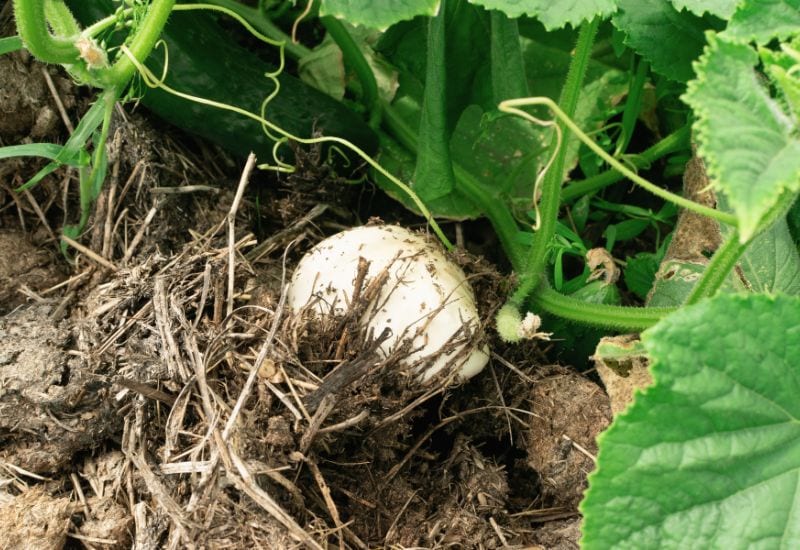
You can read this article here from the University of Oregon for more information on how vital good fungi (and mushrooms) are for your garden.
Can You Eat Mushrooms From Your Garden Beds?
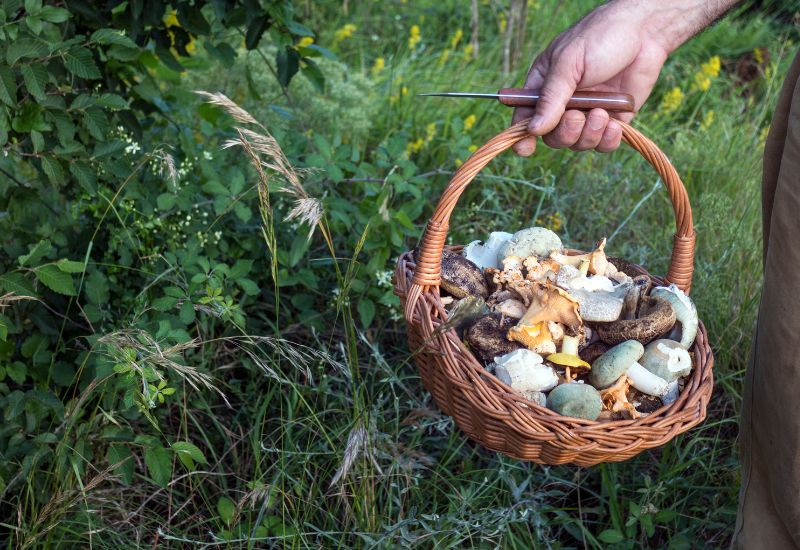
A good rule is you should only eat mushrooms that you have planted yourself unless you are experienced enough at foraging to correctly identify the edible species.
Of the 11,000 identified mushrooms only around 3% of them are poisonous. Most of the poisonous ones will only cause gastrointestinal issues, hallucinations, or other issues. However, of the 250 to 300 poisonous mushrooms in North America, approximately70 to 80 species are fatal if ingested.
So, while the chances of you getting a poisonous one is low, eating the wrong mushroom might be the last thing you do.
What To Do With Mushrooms In Your Raised Beds
Once you see mushrooms popping up in your garden, the fungi are already well-established in the soil. Here are some ways to manage mushrooms in your garden:
Leave Them Alone
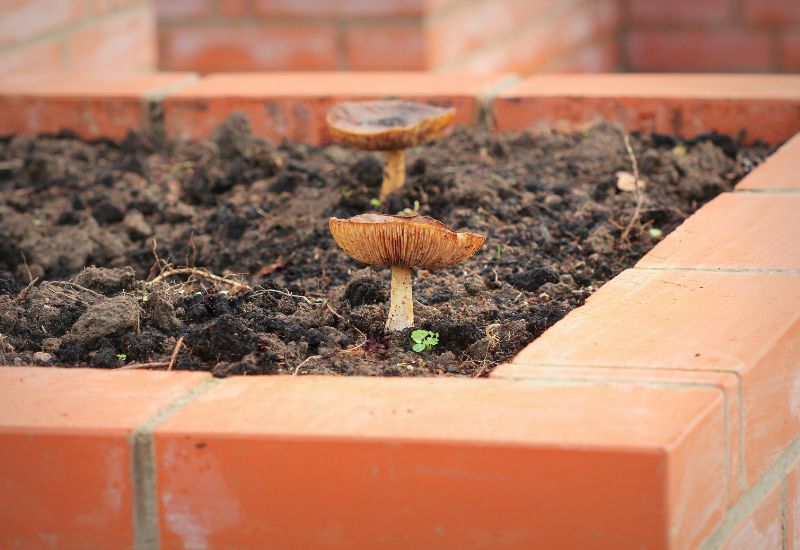
You can leave mushrooms alone and they won’t cause any problems. In most cases, the mushrooms will disappear and stop growing on their own once conditions become less favorable, such as when the weather changes or the soil dries out, or all the organic matter has been fully decomposed or exhausted.
Once the mushroom’s purpose is done (i.e. it has delivered its spores), it will disappear and probably won’t return until next year.
However, one thing I’ve noticed is that when I let them stay and they produce spores, I tend to see even more mushrooms the subsequent year. But honestly, seeing mushrooms pop up doesn’t really bother me. In fact, I find their presence rather fascinating.
Removing Mushrooms
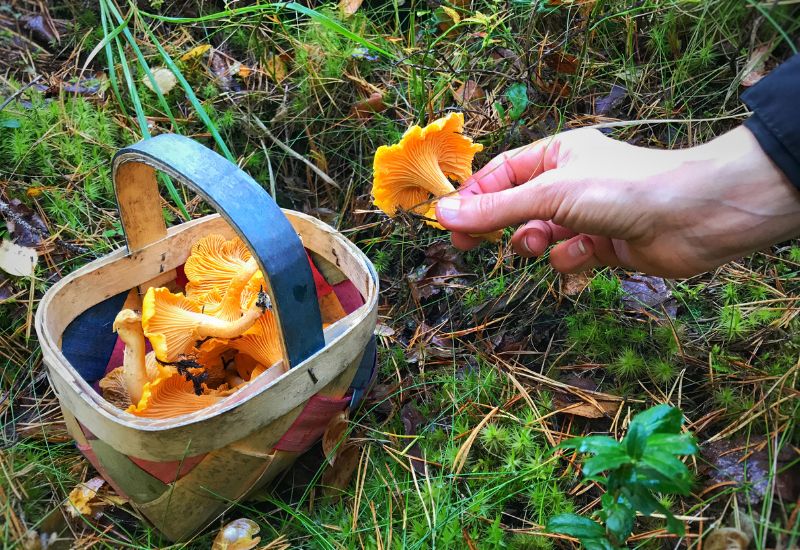
There are some reasons you might want to remove mushrooms from your soil. For starters, mushrooms will release their spores and you might not want fungi spread around your garden. You might also be worried about children, pets, or even adults accidentally ingesting a potentially poisonous mushroom.
Remember, even if you get rid of any mushrooms that sprout, the fungi will still be in the soil and new mushrooms will come back year after year (and maybe even again in the same season).
Here are some easy ways to deal with mushrooms:
Remember, this is only a reasonable solution to deal with mushrooms that have formed. Dumping lots of vinegar on the ground is NOT an effective way to remove underground mycelium because this quantity of acid would kill all living things in the soil and make the ground inhospitable to your plants.
What You Shouldn’t Do To Mushrooms
Whether you want mushrooms growing in your garden or not, here are a few things you should never do to rectify the problem:
Mushrooms: A Sign of Healthy Soil
When I was young, I was taught that if you even touch a wild mushroom, let alone eat it, you could die. While I understand this drastic exaggeration was used to keep children from eating psychedelic ‘shrooms in the lawn, introducing this fear of mushrooms severely limits a person’s appreciation for these vital and fascinating parts of nature.
While I also teach my children not to eat mushrooms, I hope we can all stop viewing them as a “problem” and encourage them to grow and thrive in our soil and gardens.
Mushrooms In Garden FAQ
If you find mushrooms growing in your raised beds, here are some quick answers to any questions you might have:
Q: Can You Eat Mushrooms Growing In Your Raised Beds?
A: While many wild mushrooms are edible, some of them are poisonous. Do not eat any mushrooms unless you can tell for certain they won’t kill you!
Q: Will Mushrooms Hurt Your Plants?
A: No, most mushrooms will benefit your plants and soil and will not harm your garden in any way.
Q: Are Mushrooms Bad For Your Garden?
A: Not only are mushrooms a sign of healthy soil full of organic matter, but they also provide numerous benefits for the soil and plants.
Q: Can You Put Mushrooms In Your Compost?
A: Yes, mushrooms are very good for your compost pile and can help with the decomposition process.
Q: Do I Have To Remove Mushrooms From My Raised Bed?
A: While you can get rid of any mushrooms that grow in your garden or raised bed, you can also leave them alone and they will most likely disappear after they have produced their spores.
Q: Should I Use Fungicides On Mushrooms?
A: No. Not only are fungicides relatively ineffective in dealing with mushrooms and the underground mycelium, they are bad for the environment and will kill far more good things that bad.

Written By
Amber Noyes
Amber Noyes was born and raised in a suburban California town, San Mateo. She holds a master’s degree in horticulture from the University of California as well as a BS in Biology from the University of San Francisco. With experience working on an organic farm, water conservation research, farmers’ markets, and plant nursery, she understands what makes plants thrive and how we can better understand the connection between microclimate and plant health. When she’s not on the land, Amber loves informing people of new ideas/things related to gardening, especially organic gardening, houseplants, and growing plants in a small space.
